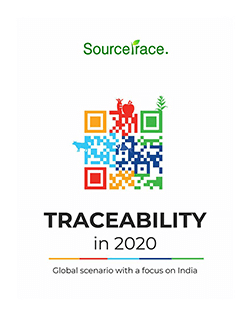Tomorrow Talks


Fabricio Peres
Global Head of Sustainable and Responsible Business for Syngenta Crop Protection, Basel-Switzerland.
Fabricio studied Business Administration in Fundaçao Getulio Vargas, Sao Paulo Brazil, with a master in Business Economics for the same institution. He has been leading the sustainability agenda in Syngenta since 2014, firstly responsible for Latin America and, in the last 5 years, globally. Prior to working with sustainability, Fabricio had experiences in Marketing, Strategy and Planning areas within Syngenta, and before joining the company, worked for 8 years in management consulting multinationals, leading strategic and transformation projects in the telecommunications, retail, banking and consumer goods industries.
Questions & Answers
1. Let's talk about sustainability. Do you think what we mean by sustainability has expanded over time?
By expansion of sustainability, I understand that society, in general, is much more aware and keen to embrace sustainability in many levels, from mindset to daily habits. When it comes to farming, agriculture and businesses have a vital role to play in the fight against climate change by making farming much more sustainable. At the heart of this is regenerative agriculture. Regenerative agriculture, which some also call nature-positive agriculture, is an approach to deliver the best outcomes to feed the planet and to take care of our environment. It's not a specific technology but farming practices that help to achieve the outcomes that we want. These outcomes include higher yields on less land, capturing carbon in the soil, reducing fertilizer and in particular nitrogen use to reduce nitrous oxide emissions, protecting biodiversity and reducing irrigated water in water limited areas.
The practices include low- or no-till, enabled by modern seeds and modern herbicides to control weeds. This keeps carbon in the soil, helps the soil to hold water, and enriches it by diversifying its microorganisms, building healthier, nutrient-rich earth. Another is using cover crops between seasons to better protect soils from erosion during the off-season. Improved crop rotations can also help replenish soil and keep it healthy. Combined with the right seeds and crop protection products – both synthetic chemistry and biologicals – and the right fertilizers and digital tools, we can achieve the outcomes that we want.
2. Carbon farming is the buzzword these days but the science is still nascent. What do we need to radically increase adoption?
It is critically important for farmers to be rewarded for the outcomes they achieve through regenerative practices. However, there is a lot of complexity to rewarding farmers. Therefore, we need mechanisms in place to help them certify they have adopted regenerative techniques, that they are capturing carbon in the soil, and that they are adding to the desired outcomes.
Three reward systems come to mind:
- Agriculture subsidies, which are worth $700 billion globally every year. These should be shifted to reward regenerative agriculture practices.
- There should be a carbon market established for agriculture so that farmers who capture carbon in the soil and emit less nitrous oxides can get paid for that.
- It is really important that this can be traced through the food value chain via labeling on products that show their environmental friendliness.
When consumers know the sustainability footprint of the food that they purchase, I believe that most would shift towards more climate-friendly foods. That's a great opportunity for regenerative agriculture, farmers, grain companies, food companies and for retailers.
3. There is a difference in how different geographies and economies are responding to sustainability. Do you believe an uniform approach to goals and approaches will work better?
The principles of Regenerative Agriculture are the same regardless of the geography and, on top of that, climate change is a worldwide issue causing more weather extremes – heatwaves, droughts, flooding and high winds. Just recently, parts of Canada and the U.S. were hit by a heatwave with temperatures reaching an unprecedented 49 degrees. And western Europe experienced historic levels of rainfall resulting in devastating floods.
Nevertheless, agricultural context is different from place to place, different crops, soils, growers profile, technologies available… and, on top of that, each country has its local challenges to face. Rural poverty, starvation are highest priority typically in developing countries, whereas biodiversity losses and soil degradation in more advanced economies. It means that, when it comes to the solution to be adopted, there is not a one-size fits all in this context, what is common and could definitely be aligned in this direction of more sustainable farming, is making technologies accessible to farmers.
Unfortunately, for many reasons such as product resistance, innovation complexity and timelines and regulatory restrictions, developing countries are having less and less technologies at their disposal to face the increasingly challenges in terms of food security and climate change.
4. Is the current ecosystem geared to deliver on new opportunities like carbon farming? What new partnerships do we need to put in place?
Regenerative agriculture technologies and practices are all there. Many farms are piloting these practices and demonstrating that they work. And there are plenty more players all along the food value chain that want to make it work. There are some efforts under way by different companies, but we all – governments, NGOs, consumers, companies, retailers and farmers – need to work together to make it happen.
One example is our Syngenta Group China's MAP – Modern Agriculture Platform – centers. Our more than 420 centers in China bring the best products, agronomic advice and services to farmers across the country, enabling them to leapfrog from outdated practices to leading-edge modern techniques.
Importantly, our MAP Centers are leading the way in meeting consumer demand for great tasting, healthy food that is sustainably grown. Our MAP beSide logo and QR code is on the packaging of 37 different food products – and the number keeps growing. When consumers scan the code, they get information about the product, the farm it comes from, and sustainability data.
Through collaborations like these, the whole value chain is better off.
5.What will you advise to technology companies working on sustainability?
Innovation is the key for improving sustainability in agriculture. Syngenta's drought resistant Artesian corn, for example. Using big data and artificial intelligence we looked at the yields of our corn seed products globally and found a natural mutation that enabled drought tolerance better than any other seed. We bred this gene into our hybrids – and our Artesian corn helps manage water more efficiently and maximize yield. Our rice with longer roots is another example. Breeding rice with deeper roots helps the plant access water deeper in the soil, even under drought conditions. Also, deeper roots help the plant survive under high wind conditions – or even under flooding – by helping it to be more secure. And we have also developed a corn called Enogen, which cows and other animals can better digest. They need 5% less feed and they emit around 10% to 15% less methane – so significantly reducing the global greenhouse gas emissions of livestock.
Products like these are helping farmers not only to address the effects of climate change but also be part of the solution to climate change and more sustainable farminig.

Download our new whitepaper
'Traceability in 2020: Global Scenario with a focus on India'

